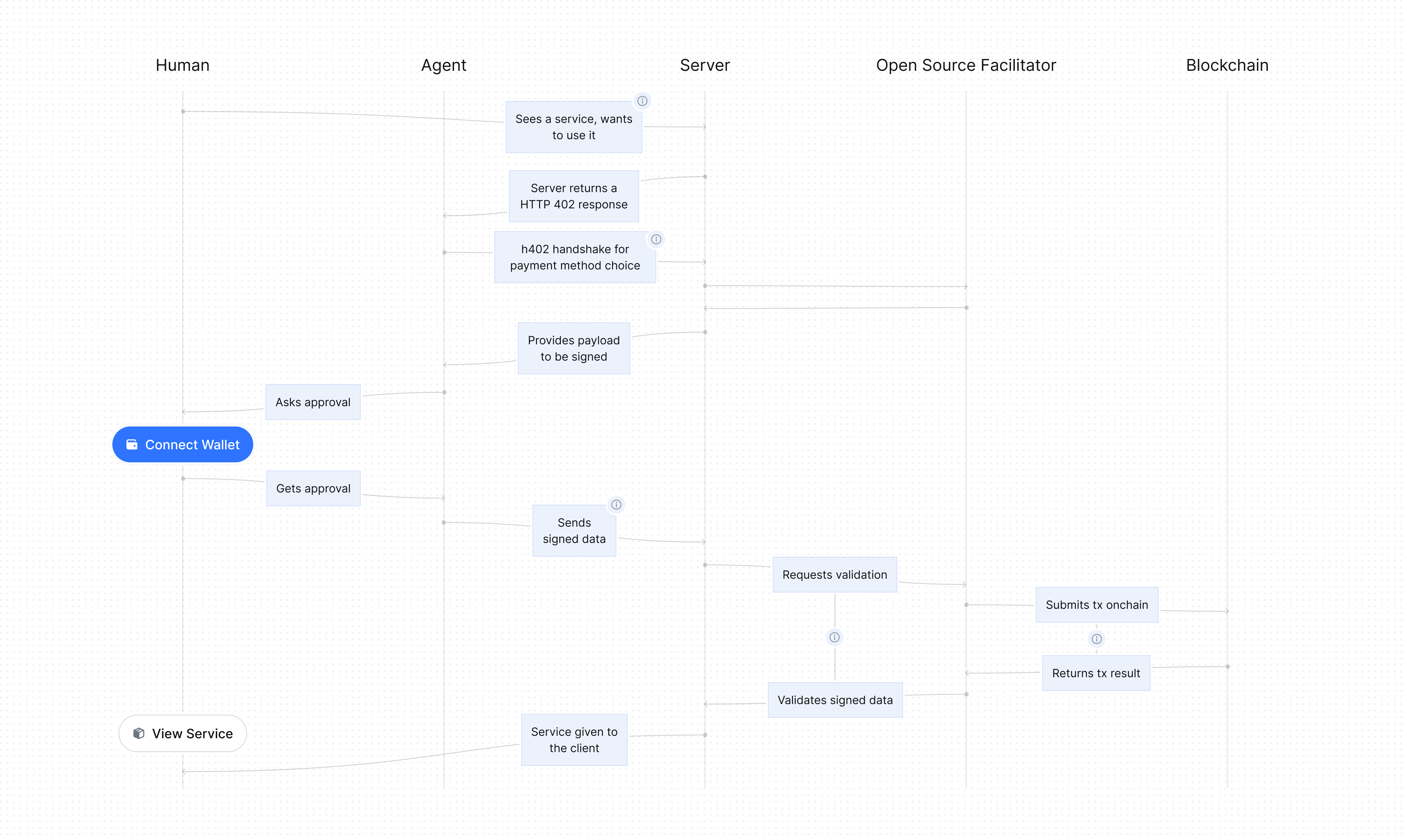
The open standard for blockchain payments
Scroll to Protocol ↓

Scroll to Protocol ↓
What you can do with h402
Use our API to create a custom integration on your own platform
Sell one-off or metered payments to monetize your agents
Accept any cryptocurrency and settle into stablecoins
Sell digital and physical products and services with no intermediaries
Recurring payments made for your website, software and any other offering
Add our embed and payment button to your website
Distribution partners
BNB Chain is a community-driven and decentralized blockchain ecosystem for Web3 dApps
Powerful GPU compute solutions on-demand
powering thousands of applications ranging from payments and games to digital art and financial services
HTTP 402 is the web-native standard for payments. H402 is designed as a frictionless machine-to-machine protocol that allows agents to pay for APIs, compute resources, and data using simple HTTP requests and native blockchain transactions scaling to billions of sub-cent micropayments.


What is h402?
How do you position h402 compared to x402?
Why did you decide to create and maintain h402 instead of contributing directly to x402?
Do you need adoption to succeed or can we benefit from x402 growth?
How do you foresee maintaining compatibility with x402 and how separate (from x402) maintenance of h402 will be?
What does post-broadcast validations for cryptocurrencies like Bitcoin mean?
Do you need adoption to succeed or can we benefit from x402 growth?
In the long run